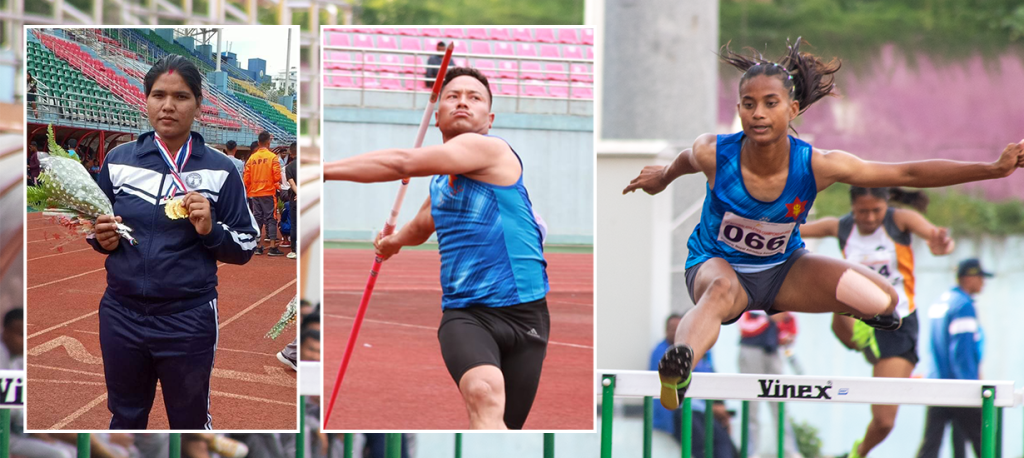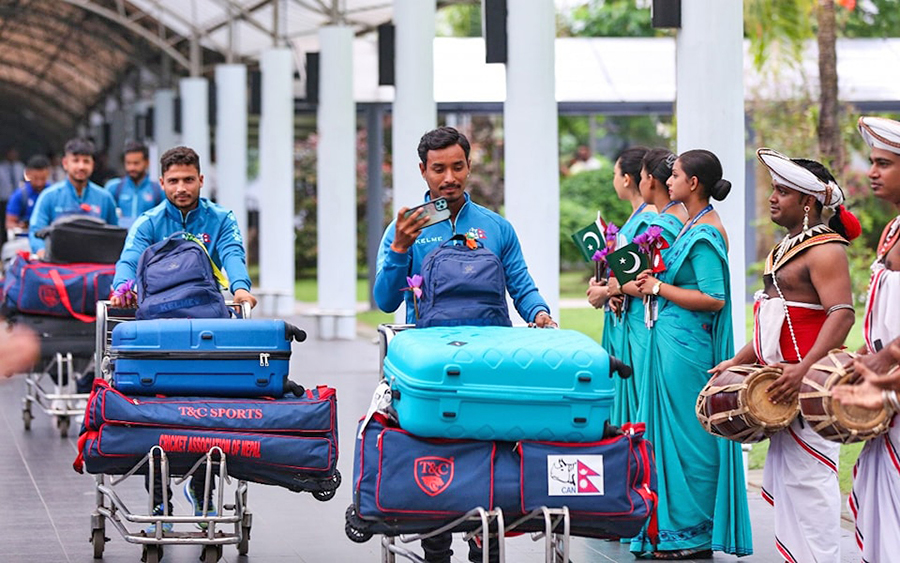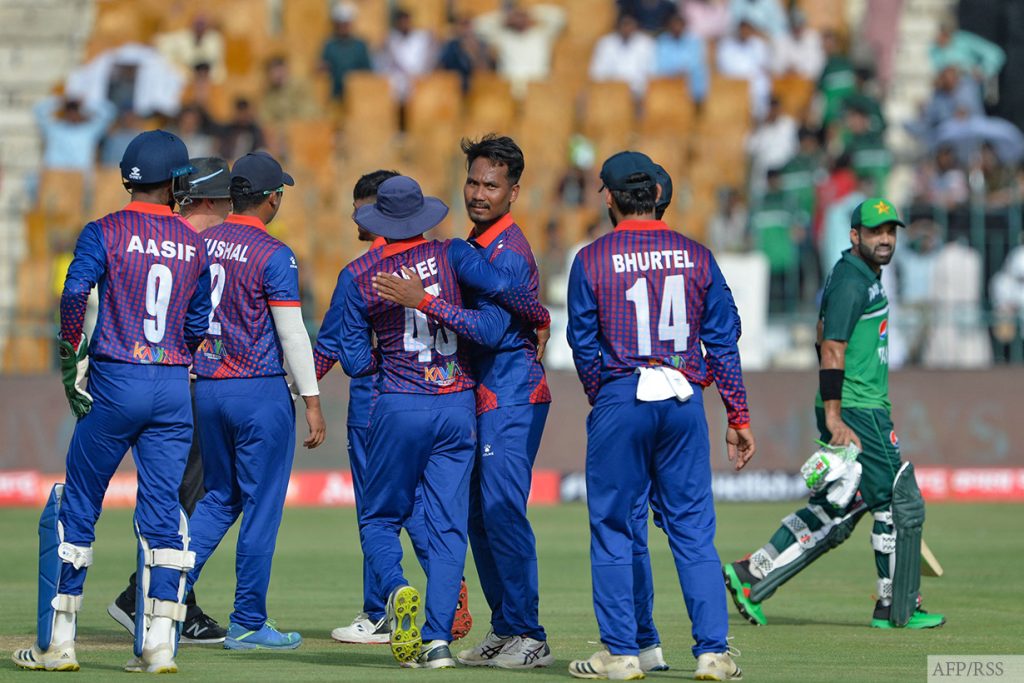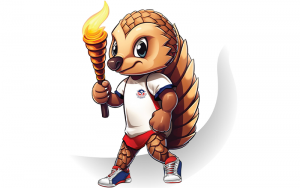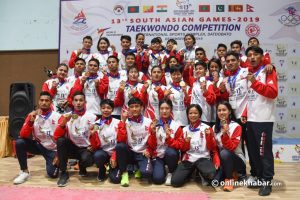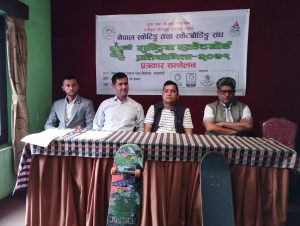Nepali athlete Rohit Chaudhary of Tribhuvan Army Club has been playing javelin for the last seven years. During this time, he has played in one international and three national competitions.
But since the 13th South Asian Games (SAG) in 2019, he’s only taken part in one competition – the 44th National Athletics Competition and he feels that due to lack of regular events, he doesn’t feel like an athlete anymore. He’s not alone in this, many Nepali athletes share the same feelings.
Identity crisis

“Competitions in other sports like football and cricket are being organised regularly. But, why is the condition of athletics so stagnant?” questions Chaudhary, after the 44th National Athletics Championship organised by the Nepal Athletics Association on June 26. “What is the meaning of the sports if the competitions are not organised ?”
The 28-year-old has been associated with javelin throw since his school days. He started playing with a bamboo-made javelin. After joining Nepal Army in 2015, the Nepali athlete began playing it professionally representing Nepal Army. In his debut, during the seventh National Games in 2016, he bagged the gold medal.
“Doctors will not recognise themselves as doctors if they do not practise. Similarly, if pilots do not fly planes for a couple of years, they will not remember themselves as pilots,” he says, adding, “Not having any competitions to take part in these three years, I couldn’t feel I was a player.”
Known as the king of sports, athletics is a foundation for every sport. There are two main categories of athletics — track and field. The track features running while the field includes two sub-categories: jump and throw. While the long-distance race in the track category is taking place frequently, the competition in the field category is held rarely for Nepali athletes.
“It seems everyone neglects our field events. We can show our game only during national championships and national games organised by the association,” says Chaudhary. “Such situations do not just give us pain but depression too. The competitions do not occur even if we prepare ourselves consistently. The motivation wanes if we do not get a place to prove ourselves. I would have already stopped playing if I had not been associated with the army.”
Last year in the Olympics held in Japan, Neeraj Chopra of India won a historical gold medal for India in the javelin throw. While Chopra bagged gold by throwing 87 metres, Chaudhary created his personal best record by throwing 61.60 metres during the national competition on Sunday. The players of the Indian sub-continent have similar body structures as Nepali athletes, yet Nepal is far behind in the competition.
According to Chaudhary, to achieve success in the international arena, Nepal has to invest and give priority to the players. He says, “I thought why we couldn’t be there as I watched Chopra win the gold at the Olympics the previous year. However, there is a significant distinction between the players here and there. We haven’t been able to practise with a real javelin and our training hasn’t been consistent. Additionally, a single international standard javelin costs Rs 250,000, which is too expensive for us.”
Lack of competitors

Chandra Kala Lamagade, a national record holder of shot put, plays for Nepal Police. She stopped playing after her pregnancy and lives in Jhapa with her daughter. After hearing about the national competition, she asked for leave from the sports club of Nepal Police and came to Kathmandu to participate in it.
Moreover, to her surprise, she won gold in shot put and javelin throw during the 44th National Athletics Championship and saved Nepal Police from becoming medal-less. However, the Nepali athlete is disappointed to see the passive scene of the field events.
“Our events are not like others as the number of competitions is very low. Things could have been better if the competitions had taken place regularly. Participating in regular competitions and training helps us to perform well at an international level,” says Lamgade.
This Nepali athlete’s victory in shot put and javelin without training for the last three years and her status as a new mother exposed the real competitive level of Nepali women in shot put and javelin throw.
“I have been playing for the last 11 years. Until now, in any event, I haven’t seen my competitors. My performance would have been enhanced if there were competitors of my level,” she says. “After pregnancy, I performed my duty from Jhapa. I had not thought of winning. I just came for an experience because staying in a distant place for a long time can create more problems in performance.”
Jaya Rani Tharu who won four gold medals and one silver medal out of five categories during her debut in a national competition is also worried about being unable to test her quality.
The 21-year-old Nepali athlete entered in Tribhuvan Army Club from the player’s quota in 2018. Since then, she got her first opportunity to play and became a national record holder in athletics. Tharu is known as a Nepali athlete with great potential.
“The competitions in our categories of athletics never take place. The importance of regular training decreases if the competitions are not held. If such competitions take place at least a year, players can improve their performance,” she says.
Neglect by the state
RK Bista, the secretary of the Nepal Athletics Association, admits the number of competitions and Nepali athletes in field events decreased while giving priority to track events.
“The Athletics Association hasn’t missed these events in the national competition. But, the other organisations and private sectors are only focused on the track events,” says Bista. He adds, “In the production of players, we are failing. Trainers are focused on conducting training only for successful players, and they don’t pay attention to producing players.”
He demands appointing the trainers from the concerned sports association rather than from the National Sports Council (NSC). But, the new Sports Act has the provision to appoint trainers under NSC.
Bista is despondent about NSC’s decision to provide only five spots for the athletics in upcoming Asian Games. The event itself contains about 40 athletics competitions, but the NSC has decided that only five Nepali athletes–three men and two women–will compete.
“It feels we are even mistreated by the regulatory body. The quota has been given only to the sports having the potential to perform well,” says Bista.
Globally, the attraction to solo games is less than the attraction to team games. The condition of those games is at high risk in a country where they have not been prioritised. In Nepal also, athletics has not been the priority of the concerned body and Nepali athletes demand a change in the situation.
This story was translated from the original Nepali version and edited for clarity and length.



